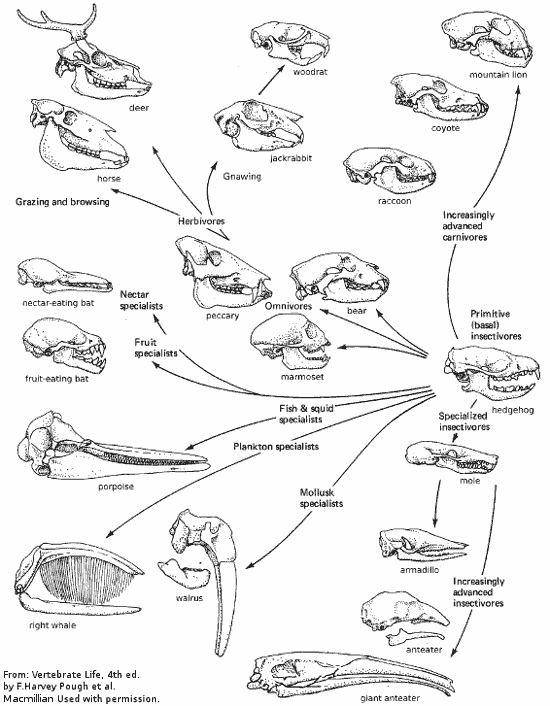Evolution and function of mammal skulls
Skulls, teeth, diets?

Mammals, across all 29 orders, have skulls of greatly varied shapes and sizes. The teeth within these skulls also vary in size, shape, and function.

Many mammals, both large and small, are herbivores (plant eaters), and many are carnivores (meat eaters). Here are two examples, a coyote (left) and a goat (right).
These diagrams show the four types of teeth in a mammal’s jaw, from front to back: incisors, canines, premolars, and molars.
Coyotes, as well as wolves and dogs, have three incisors, one canine, four premolars, and two molars on each side of the upper jaw, in the skull.
Goats, as well as sheep, bison, deer, moose, and caribou, have no incisors or canines in their upper jaw; they have three small premolars and three much larger molars. The incisors of the lower jaw work against the toothless bony pad at the tip of the upper jaw shown in this illustration.
